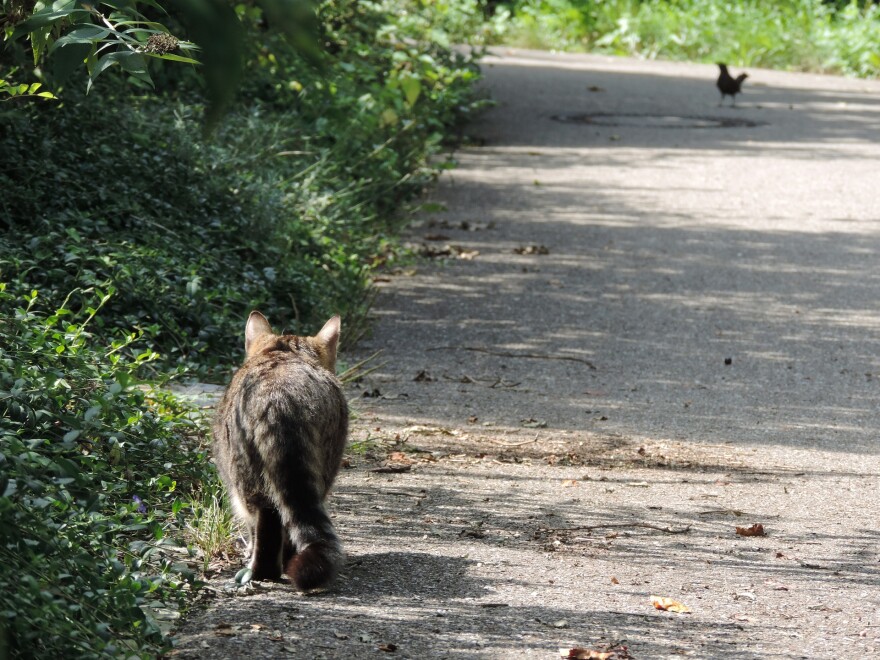Utah State University’s Ecology Center hosted a speaker this week, who covered bird migration and one of the world’s most prevalent invasive species: the domestic cat.
“Cats that go outside live half the lifespan of cats indoors: six years. Whereas an indoor cat can live 10, 12, 15 years. You're putting your cat in harm's way just by letting it outside. It could get eaten by a coyote, get killed by a car, pick up disease. It's out of your control. Not to mention the fact that it's also preying on things that aren't used to being preyed upon by cats,” said Peter Marra, the Laudato Si' professor of biology and environment and director of the environment initiative at Georgetown University.
Marra is also a coauthor of the book Cat Wars, which explores the science behind domestic cat impacts on wildlife.
In addition to outdoor cats being exposed to hazards and spreading disease, Marra said cats aren’t part of the natural ecosystem, which means our favorite felines have a disproportionately large impact on wildlife, including birds, small mammals and lizards.
“Cats caused the extinction of 63 species around the world, and they continue to impact others,” Marra said. “So, we have a responsibility to protect native ecosystems, and by putting out invasive species, we're doing everything to harm those communities that are already being impacted in so many ways.”
Some cat owners worry their cats will be bored indoors, but Marra explained that the benefits are overwhelming, and with simple changes, indoor cats can live an exciting and safe life.
“It's hard, some cats are just so used to going outside, they don't want to all of a sudden be cooped up in a house. But consider doing it slowly. Trying to keep the cat inside at night, or putting it on leash, or building that catio. The cat can still experience nature, but be in an enclosure, so it can be safe, and everything around it can also be safe,” Marra said.
Marra’s recorded seminars are available online, at https://ecology.usu.edu/seminar-series/recorded-seminars/.








